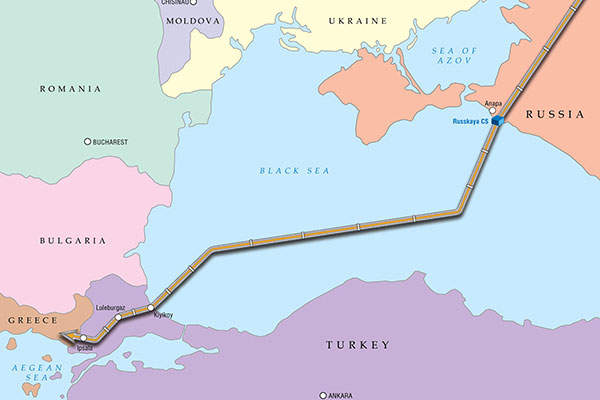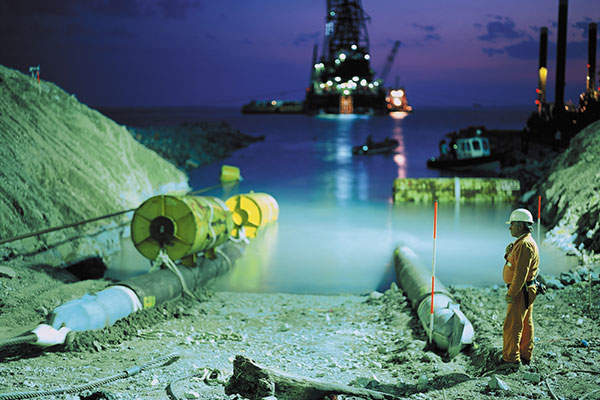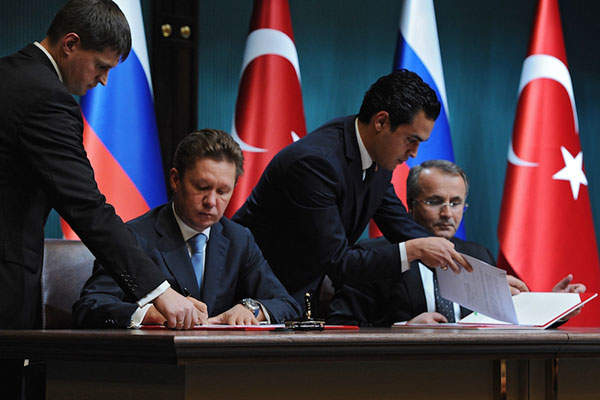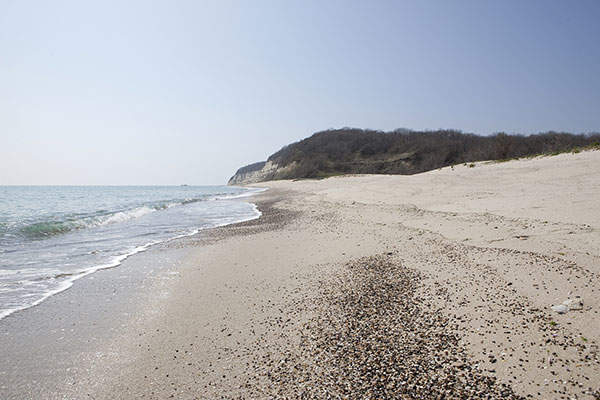The TurkStream Pipeline project involves the construction of a 910km offshore natural gas pipeline and a 180km onshore gas pipeline to transport natural gas from Russia’s large gas reserves to Turkey’s gas transportation network, in order to provide energy to Turkey and south-east Europe.
The project has been conceived to replace an older gas delivery system that runs through Ukraine, and provide a direct connection to Russian gas reserves. A lack of investments and modernisation over the years have rendered the existing system unreliable.
Starting from the Russian coast near the town of Anapa, the offshore section of the new pipeline will traverse the Black Sea at depths as low as 2,200m and emerge onshore in Turkey’s Thrace region. Being constructed by OAO Gazprom in collaboration with South Stream Transport, the offshore component is touted to be the biggest offshore pipeline ever to be laid at such low depths.
The pipeline capacity was initially planned to be 63 billion cubic metres (bcm) of gas, but was later halved to 32bcm a year. Expected to be constructed by December 2016, gas produced from the first string is meant exclusively for Turkish markets.
TurkStream pipeline project timeline
A memorandum of understanding (MoU) was signed between Gazprom and Turkish company Botaş Petroleum Pipeline Corporation in December 2014 for the construction of the offshore gas pipeline extending from Russia to Turkey across the Black Sea.
In June 2015, A permit was issued by Turkish authorities for conducting engineering surveys for the offshore section.
Greece and Russia signed a memorandum of co-operation pertaining to the construction and operation of the pipeline on Greek territory, in the same month.
The construction started in May 2015, with Gazprom being responsible for constructing the offshore section, whereas the Turkish gas transportation facilities will be jointly developed.
Route details of TurkStream pipeline
The pipeline will begin at the Russkaya compressor station near Anapa on the Russian coast and run approximately 230km in Russian waters in the Black Sea. The remaining 700km of the offshore pipeline will lie within Turkey’s Exclusive Economic Zone.
The onshore section will stretch for 180km from the Black Sea coast of Turkey to the Turkey-Greece border. It will connect to Kiyikoy village, 100km west of Istanbul, in the European part of Turkey and run further to Ipsala on the border between Turkey and Greece, via Luleburgaz.
The pipeline route is complicated owing to the sudden plunge in the Black Sea seabed from 80m to more than 1,500m at the continental shelf break.
Offshore construction of the TurkStream pipeline
The offshore section of the TurkStream pipeline will consist of four parallel pipelines running across the Black Sea, each comprising thousands of individual pipe joints that are 12m-long and having a diameter of 81cm.
A total of 300,000 pipes will be used to build the offshore pipeline, which will strengthen it against external water pressure and internal design pressure of 300bar.
The pipes will be manufactured in special mills and delivered to the construction yards on the coasts. The walls of the pipeline will comprise 39mm of carbon manganese steel to enable it to withstand high pressures.
The pipes that will be laid nearer to the shore will be additionally coated with concrete for protection against marine activities.
A pipe-laying vessel will be used for laying the pipeline on the seabed. Pipe joints will be welded onboard onto the main string and lowered into water after the weld is tested and coated. New sections will be added to the pipe string, with the pipe-laying vessel lowering 3km of pipeline a day.
Onshore construction
The pipeline will emerge onshore at Kiyikoy, from where an underground pipeline will be built to connect the TurkStream to the existing gas delivery point at Luleburgaz. It will terminate at the Turkish town of Ipsala, which lies close to the Greek border and will also be the delivery point for European customers.







